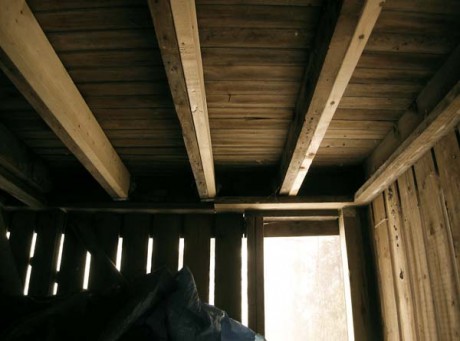How to handle musty crawlspaces
By Hannah McKenzie

Q: My parents' home occasionally has a musty odor when I visit. They spend a lot of time indoors and seem to have gotten used to the smell. I'm worried that it could affect their health or the quality of their home. I suspect the vented crawlspace is causing the smell. Is this issue relatively easy to fix?
Yes, this can be easily fixed by stopping the water that supports the biological growth giving off that musty smell.
Take a peek into the crawlspace. Depending on the layout of the house, you might be able to see quite a bit without crawling inside. If you see standing water, you'll need to figure out where it is coming from. You or a brave friend will need to explore the crawlspace to determine if the water is from a plumbing leak, groundwater or a recent rain event. If there is no plumbing leak or obvious groundwater problem, head outside to find other ways water is getting inside.
From the exterior of the house, make sure that the soil touching the foundation walls slopes away from the house. You never want standing water next to the foundation, and you especially don't want it pouring in through a foundation vent.
Next, walk around the house looking up. Are there gutters? Are they clear of debris? Are they connected to each other and secured to the house? Make sure that the gutter is connected to the downspout. Is there a downspout extender that takes the roof water at least five feet away from your house? Check for clogs in underground drain pipes with a water hose. Unless you're a wiz at math, my final question is best answered in the rain: Are the gutters and downspouts adequately sized (e.g., is the rainwater flowing in the gutters or flowing over them like Niagara Falls)?
It also wouldn't hurt to take a peek into the crawlspace after a rainstorm to see if there is standing water beneath the house.
The solutions to liquid water vary for every home. My home needed a few wheelbarrow loads of soil in a few spots to make the ground slope away from the house, gutter extenders to prevent miniature ponds at the end of each downspout, a few gutter repairs and my dear husband emptying pine needles from the gutters regularly. Some homes may need protection around crawlspace vents to keep rain from flowing into the crawlspace. Other homes need more intense grading, a drain around the perimeter, a sump pump to remove groundwater build-up, or a plumber to fix a long-term leak. Bigger issues are best solved by a trusted contractor.
Once liquid water has been addressed, you can move on to minimizing the water that you can't see: air-transported water vapor. The soil under nearly all homes in North Carolina has moisture in it. If the crawlspace floor is dirt, you should install a vapor retarder throughout the entire crawlspace. The term may sound technical but the material is not: six millimeter or thicker plastic on a roll. Seams should be overlapped a minimum of 12 inches and taped. The vapor retarder should also extend at least six inches up the foundation wall and piers. I prefer visiting crawlspaces that have slightly thicker plastic and are secured to the ground. This minimizes the potential of damage from cable guys, plumbers or a building scientist.
While you're going through the trouble to minimize moisture, make sure that you're not providing housing to wildlife — vents should be properly screened and access doors secured. Funny smells can also come from rotting carcasses and animal droppings.
Limiting the moisture that feeds the musty odor will also help keep the wood floor structure drier and minimize the need for future repairs or replacement. Eliminating standing water next to the brick or concrete block foundation wall will also ensure longer durability of the structure.
There are several other opportunities for improvement when eliminating liquid water and minimizing moisture in a crawlspace. We'll jump into those items next month. Until then, happy hunting.
-
Share this story:


